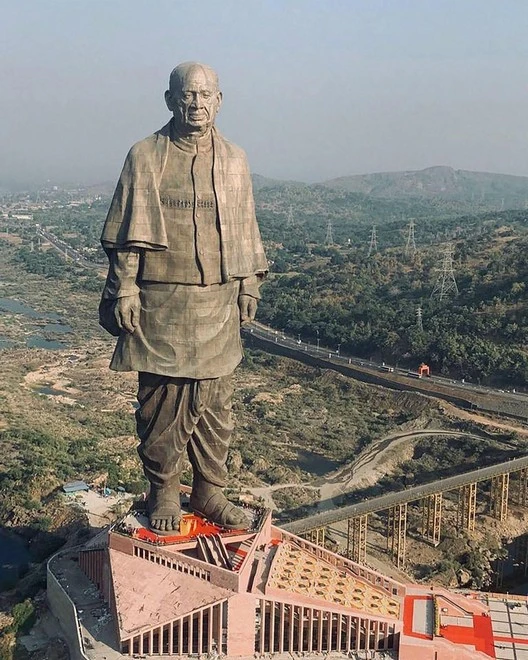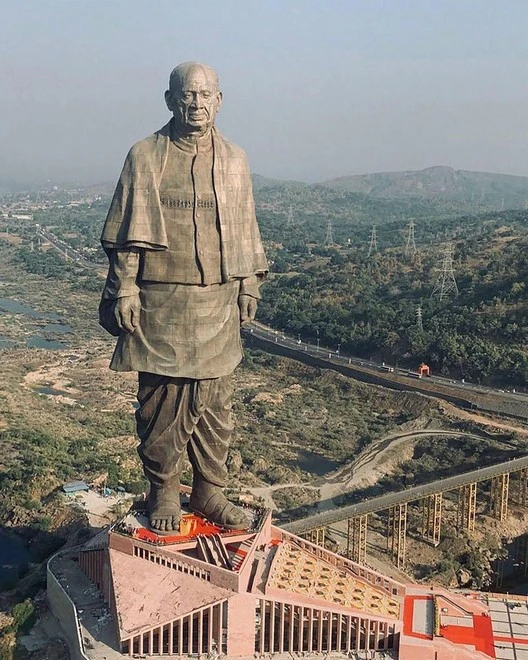Generated by Contentify AI

Introduction
Standing tall as a symbol of unity and strength, the Statue of Unity holds a significant historical background. This iconic monument is a tribute to Sardar Vallabhbhai Patel, known as the Iron Man of India, for his pivotal role in unifying the country after gaining independence from British rule. The idea of the statue was conceived to honor his legacy and promote national unity. The history behind the Statue of Unity dates back to the vision of showcasing India’s rich history and the contributions of its leaders in the journey towards independence and unity.
The Inspiration Behind the Statue
Crafted with a vision to commemorate the unifying spirit of Sardar Vallabhbhai Patel, the Statue of Unity stands as a testament to his legacy. The inspiration behind this monumental statue stemmed from the desire to honor Patel’s efforts in uniting India post-independence. The history behind the statue reflects a deep-rooted respect for Patel’s dedication to forging a cohesive nation from diverse states and cultures. By embodying unity and strength, the Statue of Unity embodies the rich historical narrative of India and the enduring values upheld by its leaders.
Design and Construction Process
The construction of the Statue of Unity was a monumental feat that required meticulous planning and execution. Designed by renowned sculptor Ram V. Sutar, the statue’s construction involved a team of skilled engineers, architects, and artisans. The process began with extensive research and conceptualization to capture the essence of Sardar Vallabhbhai Patel‘s persona in the majestic structure. The intricate detailing of the statue, standing at 182 meters, symbolizes unity and strength, embodying the vision of a cohesive and resilient nation. The construction process was a blend of modern technology and traditional craftsmanship, reflecting the historical significance and cultural heritage of India.
Unveiling and Inauguration Ceremony
The unveiling and inauguration ceremony of the Statue of Unity marked a historic moment in India’s legacy. The grand event captured the essence of national pride and unity as dignitaries from around the world gathered to pay homage to Sardar Vallabhbhai Patel. The ceremony, held on October 31, 2018, showcased a cultural extravaganza that celebrated the enduring spirit of unity that Patel embodied. The unveiling of the statue was a symbolic gesture of acknowledging Patel’s instrumental role in shaping India’s destiny and fostering unity among its diverse populace. The inauguration ceremony not only honored the legacy of the Iron Man of India but also served as a reminder of the country’s rich history and the values that bind its people together.
Impact and Significance
The impact and significance of the Statue of Unity extend far beyond its towering height and impressive engineering. This monumental structure stands as a poignant reminder of Sardar Vallabhbhai Patel‘s enduring legacy as the architect of India’s unity. The statue serves as a beacon of national pride and solidarity, encapsulating the spirit of unity that Patel worked tirelessly to foster. Its towering presence on the banks of the Narmada River not only pays homage to Patel’s monumental contributions to the nation’s history but also serves as a symbol of strength and resilience for generations to come. The Statue of Unity stands as a testament to India’s rich historical tapestry and the unwavering commitment of its leaders to uphold the values of unity and inclusivity.
Conclusion
The history of the Statue of Unity traces back to a profound inspiration deeply rooted in the legacy of Sardar Vallabhbhai Patel. The idea behind this iconic monument was born out of a collective vision to commemorate Patel’s role in unifying India post-independence. Designed to encapsulate Patel’s unifying spirit, the statue stands as a symbol of strength and solidarity, reflecting the rich historical narrative of India’s journey towards unity. The meticulous design and construction process involved a blend of modern technology and traditional craftsmanship, highlighting the cultural heritage and significance of the monument. The unveiling and inauguration ceremony of the Statue of Unity marked a historic moment, emphasizing the values of national pride and unity that Patel championed. The impact and significance of the statue extend beyond its physical presence, serving as a timeless tribute to Patel’s contributions and a beacon of strength for the nation.



